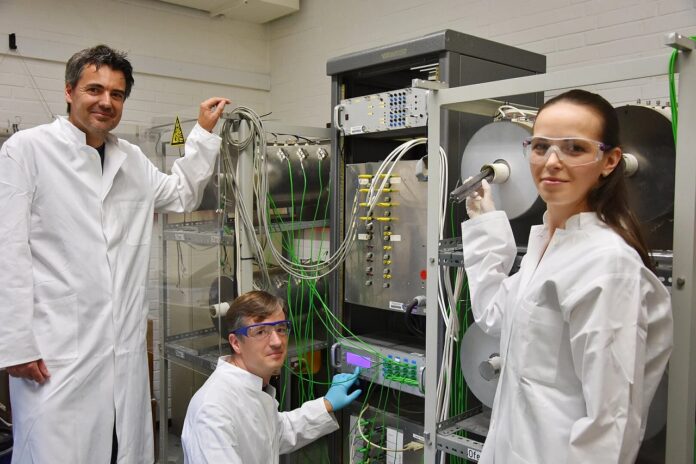Light-tunability of material properties in energy conversion and information technology has applications in optical control of electronic phases, charge ordering, and interlayer correlations in highly correlated materials such as transition metal dichalcogenides.
Researchers from the Max Planck Institute (MPI) for Multidisciplinary Sciences in Göttingen, together with colleagues from Kiel University (CAU), Deutsches Elektronen Synchrotron DESY, and the University of Göttingen, have successfully created a state in a crystalline material that is neither liquid nor crystalline.
The studied layered crystal, grown in Kiel by Kai Rossnagel’s team, is distinguished by minimal crystal structure distortion at room temperature due to the crystal’s unique structure, in which thin layers of metals and sulfur atoms are stacked on top of each other and only weakly bound. When these layers are attacked with ultrashort laser bursts, the distortion changes its orientation in a trillionth of a second, dramatically enhancing the material’s electrical conductivity. Although both distortions have an ordered structure and related crystalline features, a very disordered state can be observed during the transition.
The hexatic state, mostly observed in liquid crystals, is exceedingly volatile and has already vanished by fractions of a millisecond. Making the hexatic state apparent put much strain on the measurement technology.
Till Domröse, a Ph.D. student at MPI and first author of the study, said, “After exiting the material with light, the atoms in the crystal structure have yet to find their new, slightly different positions. This transforms the material into an unusually disordered, so-called hexatic state.”
The necessary spatial resolution can theoretically be achieved using electron microscopes, but they are often too slow. The Göttingen team, led by Max Planck Director Claus Ropers, has filled this gap by creating an “ultrafast” electron microscope that can capture even the most rapid processes in the nano cosmos. These experiments also used this microscope, which allowed us to take several pictures of the unusually organized phase and its temporal development.
Numerous scientific problems and potential applications are raised by the highly complicated dynamics of this layered crystal. The foundation is made up of intriguing network-like structures that can only be created and examined in close cooperation with cutting-edge research facilities, such as those at the MPI in Göttingen and DESY in Hamburg.
Since the early 1980s, these unique crystals have been created in Kiel. CAU and DESY have had strong relationships formalized in the Ruprecht-Haensel Laboratory. Studies like the one conducted with the MPI in Göttingen, in which a novel state in a quantum material was found, also provide opportunities for future collaboration with DESY research teams to comprehend unique quantum materials.
The University of Göttingen’s Collaboration Centre 1073, “Atomic-scale control of energy conversion.” provided funding for the project.
Journal Reference:
- Domröse, T., Danz, T., Schaible,et al. Light-induced hexatic state in a layered quantum material. Nature Materials. DOI: 10.1038/s41563-023-01600-6
